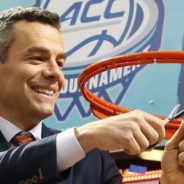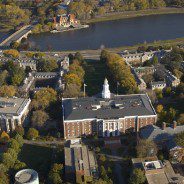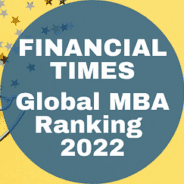Search results for yale som:
Full-Time MBA
Yale Full-Time MBA Program Structure
The Yale full-time MBA can be completed over four semesters, each consisting of 12 weeks. Each of these semesters are divided into two separate six-week quarters.
To graduate, students must earn 72 credits. Among the total, 34 credits are designated for core courses and 38 are through electives.
Curriculum
First-year students must complete their core courses, starting with the seven-week Orientation to Management. They then complete the ten-course Organizational Perspectives segment, which lasts two quarters. First-year students also fulfill an international experience requirement during the spring, traveling on various faculty-led field trips. Please note, this may be impacted by COVID-19.
Students complete most of the electives in their second years, with the option to take multiple concurrent courses with many of Yale University’s other affiliated colleges, such as the Yale School of Law and the Yale School of Architecture. In addition, students can study at several international exchange partner schools during the fall semester of the second year.
Full-Time MBA Rankings
• U.S. News & World Report: 9
• Bloomberg: 14
• Forbes: 11
• Financial Times: 14
• The Economist: 21
Class Profile
The Yale full-time MBA Class of 2021 features 345 students. An estimated 42 percent of the class is made up of female students and 44percent international students. The median GMAT of the class is 720 and the median GPA is 3.66.
Career Statistics
The majority of graduates from the most recent Yale SOM full-time MBA class earned careers in consulting (37.2 percent), technology (12.8 percent), and finance (21.9 percent). The median salary of the class was $135,000 for domestic hires and $110,000 for international hires.
An estimated 92.4 percent of the Class of 2019 earned employment offers within three months of graduation.
Tuition, Scholarships, and Financial Aid
The current tuition cost for the Yale full-time MBA is $74,560. Combined with fees, room, board, and textbooks, the total for 2020-21 is $102,240.
All Yale SOM full-time MBA applicants are automatically eligible for merit-based scholarships. About 50 percent earn some form of a scholarship, while 29 students currently hold full-tuition scholarships. Additionally, U.S. armed services veterans are eligible for the Yellow Ribbon Program, which can greatly reduce tuition costs.
Financial aid is available to all students. U.S. students are eligible for Federal Application for Student Aid (FAFSA). The school currently estimates that the average indebtedness is more than $60,000 per student. On average, loans take 6.5 years for Yale SOM full-time MBAs to pay off.
Admissions
In order to apply to the Yale SOM full-time MBA program, applicants must submit:
• Official transcripts
• Two professional recommendations
• GMAT/GRE scores
• Video of answered application questions
• $250 application fee (can be waived for select applicants)
The business school encourages those with work experience to apply, but it is not a strict requirement for enrollment. There is also no minimum GMAT/GRE score requirement. International applicants are not required to take any English language proficiency test, although all transcripts must be translated to English for submission.
Interviews are required as part of the admissions process.
2021-2022 Yale Full-Time MBA Deadlines
Round 1
September 14, 2021
Decision
December 3, 2021
Round 2
January 6, 2022
Decision
March 25, 2022
Round 3
April 12, 2022
Decision
May 18, 2022
Yale Full-Time MBA FAQ
How has the university responded to the current pandemic?
Classes will be hybrid with an emphasis on online learning to keep students safe.
How much does the program cost?
The full-time MBA is $102,240/year including fees and living expenses. There are a 5-month and 10-month payment plan available to students.
Does Yale offer international experiences for MBA students?
Yes, while many have been postponed due to the current pandemic Yale has some enticing international experiences including Global Network Weeks and Global Network Courses.
Working on your Yale SOM application? Check out the Clear Admit Yale Essay Topic Analysis for advice on how to approach your essays.
Get an MBA Admissions Edge with the LiveWire Data Dashboard
Curious about your chances of gaining admission to top business schools? Now you can see how hundreds of previous applicants fared at Yale SOM in just a few clicks. The LiveWire Data Dashboard’s interactive data visualization tools allow you to spot trends, compare MBA programs, and benchmark your stats against successful applicants at your target schools. Learn more here! Ready to explore the data? Purchase a 30-Day or 365-Day subscription in our shop for immediate access!
3 Essential MBA Essay Question Tips
For many applicants, the MBA essay question is the single most terrifying and challenging part of the entire MBA application. More than your GMAT, GPA, or resume, the essay is extremely personal. The admissions committee uses it to get to know who you are, what you want, and how you’ll fit. And that’s a lot of pressure.
To succeed in your MBA essay, you have to know who you are well enough to paint a comprehensive picture that the admissions committee will keep reading until the last word. You want your story to be interesting, to answer the essay prompts, and to demonstrate “why you.”
And though every school has different MBA essay prompts, three essential elements are always vital. Continue reading…
The Perfect MBA Career: Portfolio Manager
If working in investment strategy seems appealing, then a job as a portfolio manager may be right for you.
What are the Best MBA Programs by Specialty?
Each year, U.S. News and World Report looks at the top business schools around the country to decide which offer the best MBA programs. The goal is to help MBA candidates most effectively choose the best MBA degree to help them achieve their goals based on their interests and strengths. The problem is that there are hundreds of programs and it can be difficult to weed out all the noise to get to the information that you want most.
That’s why the U.S. News and World Report decided to break down all of their findings into a more easily consumable ranking. They outlined the top MBA programs by discipline to help you quickly and easily find the school you’re looking for. Each of the schools on the list was chosen based on alumni interviews, schools statistics, research data, and more.
We’ve broken down the results below along with crucial information about each school listed and where you can learn more information.
March Madness Begins: Consortium MBA Draft Takes Place Today
Clear Admit recently highlighted this year’s Consortium for Graduate Study in Management MBA Draft, which is offering huge scholarship payouts for a lucky few. Check it out below.
No, it has nothing to do with basketball. A draft of another sort will take place today, but for some MBA applicants it could be as big as getting by the Golden State Warriors. We’re talking about the annual draft for the Consortium for Graduate Study in Management. Each year, the group’s member business schools offer tens of millions of dollars in fellowships to hundreds of MBA applicants, most under-represented minorities.
Held annually in mid-March, the draft is a complex matching up of leading business schools and applicants based on the order of preference expressed by each. Consortium member schools include the University of Michigan’s Ross School, UVA’s Darden School, UC Berkeley’s Haas School, Dartmouth’s Tuck School, and NYU Stern, to name just a few. When applicants apply as part of the Consortium Fellowship process, they benefit from being able to apply to six of the 19 members schools using a single application (with volume discounts for multiple schools). But then comes the tough—and critical—part.
The Importance of Ranking Your Consortium Schools Carefully
You have to rank your selected schools in order of your desire to attend, which will determine the order in which you’ll be considered for the Consortium Fellowship, a merit-based, full-tuition award. (There is the pesky little detail about needing to gain admission to a school or schools on your list.) Provided you are admitted to some or all of the schools on your list, your ranking then comes into play. If your first-ranked school declines to award you funding through the Consortium, the opportunity will be passed on to the next school on your list, and so on. According to a Consortium employee, the order in which applicants have ranked their choices is not revealed explicitly to the schools. Instead, each school is just not given an opportunity to offer you the fellowship until theirs is the top remaining school on your list.
Of course, another important part of the Consortium application is demonstrating a proven commitment to increasing the ranks of African Americans, Hispanic Americans, and Native Americans in business education and corporate leadership. The Consortium was founded in 1966 by Washington University professor Sterling Schoen around the mission of equipping more African American men with the requisite business skills to succeed in corporate America. Three schools and 21 men took part in the first year. Additional schools began to join as members, and in 1970 applicant membership was widened to women, Hispanic Americans, and Native Americans. In 2004, in compliance with a Supreme Court ruling a year earlier, membership was opened to all U.S. citizens and permanent residents who demonstrate a track record of supporting the Consortium vision.
Today’s Consortium MBA Draft Day
Fast forward to today, draft day. Representatives from the member schools are gathering with Consortium staff to begin the complicated matchmaking process, which at least in recent years has taken place in a St. Louis hotel room near the Consortium’s Chesterfield, MO, headquarters. Unless things have changed dramatically with recent additions to the number of member schools—the group has grown from 17 in 2011 to 19 this past July—the process includes six rounds and takes about four hours to complete.
Schools come in with their draft picks in hand, and the school designated as first choice by the most applicants gets to choose as many of those students as it wants to offer the fellowship. And so it continues, passing on to each successive school to select from its first-round applicants. If a school passes on an applicant at any time in the process, another school can then select that applicant in a later round.
From the applicant’s point of view, here’s what it looks like: Let’s say that Yale SOM is your first-ranked school and you are admitted into its MBA program. In today’s draft, Yale SOM will have first dibs on offering you the Consortium Fellowship. If Yale SOM does offer you the fellowship, everyone’s happy and you can choose to attend with the benefit of the fellowship. You may still be admitted to other programs on your list, but these programs cannot offer you the Consortium Fellowship.
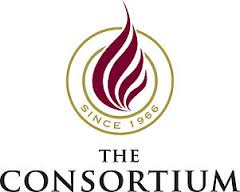
But say you were admitted to Yale SOM but it doesn’t offer you the fellowship—or you don’t get into Yale—then the opportunity to offer you the fellowship is made available to your second-ranked school, and on down the line.
While only one school can offer you the Consortium Fellowship, that does not preclude the other schools on your list from offering you other school-specific scholarship funding. Once awarded by one school, the Consortium Fellowship is not transferable to another.
Regardless of whether you ultimately accept the fellowship and attend the school that offers it, you retain your Consortium membership status, granted as part of the application process. As long as you attend a school within the Consortium, you’ll get take advantage of a wide range of membership benefits, including valuable recruitment and networking events, webinars, and chats.
Why Would Anyone Turn Down a Consortium Fellowship?
Consortium member schools will typically select more students than they have fellowships for to account for the fact that some fellowship recipients will ultimately turn down their offers. What would make a fellowship applicant turn down a free ride to a top-ranked business school, you ask? Sometimes it’s admission to an even higher-ranked business school not part of the Consortium (Harvard, Stanford, Wharton, Columbia, Kellogg, MIT Sloan, and Chicago Booth don’t play the Consortium game). This becomes an easier decision if these other schools offer their own attractive financial aid enticements, which they often do. So in the coming Decision Week(s), keep in mind that schools that have picked you now get to anxiously await word of whether you pick them. It’s nice when the tables get turned, right?
The official Consortium Fellowship notification deadline is March 23rd, but we’d guess many schools will be eager to share the news of the fellowship award in tandem with the news of acceptance. It should be fun to watch on MBA LiveWire! Those of us here at Clear Admit are wishing luck to the applicants and schools involved in today’s Consortium MBA Draft and hope some terrific matches are made, resulting in hundreds of successful MBA careers and further expansion of the Consortium mission’s reach.
To those on MBA Livewire who have speculated about why some Consortium applicants learned of decisions from certain schools before stated decision deadlines, that’s also related to today’s draft. Consortium member schools will have needed to make admissions decisions for their potential drafts picks by today, regardless of the school’s own decision deadline. Some schools may choose to communicate those decisions to applicants early since they already will have been reached.
Learn more about the Consortium application process here. Applications for the Class of 2021 open in August 2018 are due in two rounds, the first in October 2018, and the second in January 2019.
What Is The Worst MBA Advice You Have Ever Heard?
The path to business school is paved with experts and know-nothing-know-it-alls alike—it’s just hard to tell the difference sometimes.
This is especially true when it comes to “dos” and “don’ts” of the trade. You’re bound to encounter confusing, conflicting, or just plain bad advice in any field but there’s something about business school that seems to attract meaningless jargon like flies to honey.
I spoke to Accepted’s Linda Abraham and North Star Admissions’ Karen Marks, two leading admissions counselors and bonafide MBA experts, about the eight worst pieces of advice most commonly doled out to MBAs-to-be.
“Tell them what they want to hear.”
“The admissions committee will see through it, the applicant will blend into the gray mass of applicants who are making the same mistake, and at competitive schools, will get dinged,” Abraham writes. “Telling schools what you think they want to hear means telling them what you don’t know, and it also means you’re not telling them what you want them to know.”
“If you are waitlisted, ignore the school’s directions and make a dramatic gesture to demonstrate your interest.”
According to Marks, “People … have been known to do everything from emailing the admissions office once a day (relatively benign, but inappropriate) to sending homemade gifts (creepy) to showing up in the admissions office and refusing to leave until they have spoken with the Dean. All of this backfires, it’s really important to listen to the school’s directions and express your interest in ways that underscore your ability to follow directions, and your understanding of the culture.”
“Change your career goals and personal story for each school.”
Marks explains, “Your goals and core narrative should remain constant, no matter what school you are applying to. Don’t tell Stanford that you want to work in micro-finance and Kellogg that you dream of marketing, just because you think it’s what they want to hear.”
Abraham recalls an interaction she had with “an applicant who came to us initially for Rejection Review.” This applicant was told by his consultant, a former Yale SOM adcom director, “she would have rejected him also because the applicant’s goal made no sense given his work experience, education and extra-curricular activities. He explained that his friends had told him to use the “hot” goal that year, so he used it in his application. Next year he applied with an authentic goal (and app) and was accepted to an M7 school.”
“You have no chance of getting into a top MBA program because you didn’t go to a top undergrad.”
Abraham couldn’t disagree more with this statement.
“If an applicant excelled at their local college, shows leadership, and has had an impactful career, and has a competitive test score, they have a chance at elite MBA programs,” she says.
“You have a 750-plus GMAT and a 3.9 GPA, you’re in anywhere.”
Both counselors call hogwash on this one.
“You can’t rest on academic laurels. Yes, those numbers are very attractive to top b-schools, but if they are combined with arrogance—forget it. Schools also want to see leadership and impact in their accepted students. So, if Super Student wasn’t a super employee or entrepreneur or campus community member, those stats do not guarantee acceptance at top MBA programs.”
“Your goals don’t really matter, because you’re likely to change them once at b-school.”
Abraham writes, “Yes, your goals are likely to change and schools know that, but they at least want you to start their program with direction and a goal they know they can help you achieve. Goals are a major component in fit at most top MBA programs. And if yours are vague or don’t match the strengths of your target schools, then you simply aren’t showing fit.”
“If you have a blind interview, you can wing it.”
“You can wing it. BUT you are unlikely to be as effective as the other applicants who prepare,” Abraham notes.
“They will have researched the school, know exactly why they want to attend this program, and mined their own experiences and achievements so they are ready to show they belong at the interviewing school and will contribute to the school’s student body and alumni network.”
“Oh, and they also have thoughtful questions to ask the interviewer.”
“You won’t get in if your numbers are below an arbitrary number, so don’t even bother applying.”
Abraham has worked with “multiple clients who had extremely low GMATs and GPAs, below 2.5 and below 600, who have been admitted to Wharton, Booth, HBS, etc. I also admitted applicants with weak numeric profiles to Tuck when I was the Associate Director of Admissions. (They had other stellar qualities).”
Abraham believes that “essays, personality, perspective and life experience are more important than numbers.” She adds, “Application reviews are comprehensive. One element is extremely unlikely to keep you out or carry you across the threshold of a dream MBA program.”
To Be Out—or Not to Be Out—in Your MBA Application?
In honor of yesterday’s National Coming Out Day, we thought we’d tackle a thorny question faced by some applicants to leading business schools: To be out—or not to be out—in your MBA application? In recent years, increasing numbers of top business schools have given applicants the opportunity to disclose their sexual orientation as lesbian, gay, bisexual, transgender, or queer (LGBTQ) as part of their application if they so choose. But what are the pros and cons of doing so? To find out, we spoke with admissions directors at schools all over the country to get their input.
The overwhelming consensus, we found, was that there are multiple positives and few, if any, negatives to sharing your sexual orientation as part of the application process provided you feel comfortable doing so. This is not to say that anyone should feel pressured to disclose anything that they are not personally comfortable sharing—just that those who feel inclined to share shouldn’t have any hesitation from an admissions standpoint.
“I Really Only See Pros”
“I really only see pros,” says Soojin Kwon, managing director of full-time MBA admissions at the University of Michigan’s Ross School of Business. “We are always encouraging applicants to be very authentic and bring their whole selves so that we have context around them. We are a very diverse and inclusive community, and we want to know every aspect of who you are and what you’ll bring to that community.”
Applicants who do disclose LGBTQ status—or even those who don’t—also can indicate that they would be interested in hearing from students in the school’s Out for Business student club, which helps prospective students get tapped into the campus LGBTQ community well before they arrive on campus. “Our current LGBTQ students absolutely reach out, embrace, and actively engage with applicants who self-identify because they want to make sure that our community is very strong on every aspect of diversity—they are very proactive,” Kwon says.
NYU Stern School of Business Associate Dean of MBA Admissions Isser Gallogly stresses that whether or not to disclose sexual orientation is a personal choice that should be based on each individual’s comfort level. “But certainly at NYU Stern—in New York’s Greenwich Village—we are obviously incredibly diverse and supportive of diversity,” he says. The LGBTQ rights movement can trace its origins to the neighborhood surrounding Stern, and a community of acceptance has prevailed there for decades.
“It Might Present Certain Advantages”
But even beyond Greenwich Village and Stern, Gallogly tells LGBTQ applicants that they shouldn’t have concerns about being out in the MBA admissions process. “Business schools are looking for diversity—we as admissions officers are always looking for different vantage points and perspectives that applicants can bring to the class. I think anything that’s a little different or unique only helps your personal story,” he says. “I don’t think there’s any disadvantage to being out in the admissions process, and, in fact, it might present certain advantages.”
Self-Identifying Is First Step to Qualifying for LGBTQ MBA Fellowship
Indeed, students who self-identify as LGBTQ at certain schools will automatically be considered for scholarship aid through the Reaching Out LGBTQ MBA (ROMBA) Fellowship Program. ROMBA is a nonprofit organization dedicated to “educating, inspiring, and connecting the student and alumni LGBTQ MBA and graduate communities in an ongoing effort to create the next generation of out business leaders.” Recipients of the LGBTQ MBA Fellowship each receive a minimum of $10,000 in scholarship aid per academic year or $20,000 in total scholarship aid for two years. In addition, they get access to exclusive mentorship and leadership programming through ROMBA. Fifty-five members of the Class of 2019 will collectively receive more than $1,300,000 for each year in business school, ROMBA reports. “Since 2015, 35 schools have awarded $6.3 million to LGBTQ applicants who were out on their applications,” adds Matt Kidd, ROMBA Executive Director.
Beyond self-identifying through a school’s application form, applicants interested in being considered for the ROMBA fellowship are encouraged to demonstrate LGBTQ leadership roles on their resume, express interest in business schools’ on-campus LGBTQ clubs, and share relevant LGBTQ leadership experiences in their application essays.
YOU MIGHT ALSO LIKE: This Year’s Reaching Out MBA LGBTQ Conference Arrives in Boston
Prem Tumkosit, a 2011 MBA graduate from Yale School of Management (SOM), didn’t explicitly disclose his sexual orientation on his MBA applications. When he was applying, that option was provided by fewer schools. “But I did list my participation and leadership positions in LGBT organizations, which I felt was essentially disclosing,” he says.
Gallogly adds that current students are frequently shocked and surprised—once they begin the recruiting process—by how many corporations are likewise looking for diversity, including in sexual orientation. “The short story is if you feel comfortable, I would go for it [disclose sexual orientation], because you will see opportunities to receive support,” he said. “Short story: It’s a good thing.”
Opt in to Get Connected to On-Campus Groups
Bruce Delmonico, Assistant Dean and Director of Admissions at Yale SOM, says that his team considers it so much a positive that he sometimes has to stop and remind himself that some applicants might actually wonder if it could be viewed as a negative. “We consider it an aspect of diversity, so we certainly don’t see any negative in it,” he says. As at Ross—and many other schools—Yale SOM also allows applicants to opt-in to receive communication from LGBTQ students and groups, which helps facilitate valuable connections both during the application process and in the months leading up to school’s start.
“I really don’t see any negatives to it,” Delmonico continues. “People sometimes choose not to disclose, and obviously that is fine—it’s everyone’s individual choice,” he notes. “It can still be a difficult thing—and people are at different stages in terms of their own self-identification—so it is not as though not sharing is viewed negatively. But it is an aspect of diversity that we think about as we are trying to put together our class, so we view it as a positive.”
Delmonico does share that Yale has seen an increase in the number of people self-identifying as LGBTQ. “I think that’s a good thing,” he says, “but we do want to make sure people are being accurate in self-reporting,” he adds. Especially outside of the United States, he worries that not everyone knows what it means to identify as LGBTQ.
Don’t Self-Identify as LGBTQ If You’re Not LGBTQ
“We also sometimes have to wonder if some candidates might be looking to game it a little bit,” he says. “That’s something we are starting to be sensitive to. We look at it as a positive—but we don’t want people just checking the box because they think it might give them a little boost over other applicants.” To offset potential gaming of this system, his team has begun to dig a little deeper to see what being LGBTQ means to those who check the box. “It’s not something we would ask about in an interview,” he stresses, “but we will look to see what else they might have shared” that might support their LGBTQ status. “It can be helpful, if you are self-reporting, if you share some way you are expressing that already,” he says. For example, some people write about LGBTQ themes in their essays or talk about related groups they’ve been part of, he says.
Amanda Carlson, Assistant Dean of Admissions at Columbia Business School, shares that her team also saw an uptick in self-reporting among applicants for the Class of 2019, particularly from certain regions. “I am saying this somewhat tongue and cheek,” she notes, “but it’s like some admissions consultant told candidates in China that saying you are part of the LGBTQ population is a good thing, because I think every single Chinese candidate this year checked the box.” Of course, she met personally with Chinese candidates who were quite genuinely members of the LGBTQ community, she adds, but she also wonders if there was some confusion among some applicants about what LGBTQ means.
“At the same time, we recognize that there is an appeal to being in New York—where people rightly feel that being LGBTQ is a warm and accepted thing—where it may not always be in China,” she notes.
Is LGBTQ Inclusive Enough?
Maryellen Reilly, deputy vice dean of admissions, financial aid, and career management at the University of Pennsylvania’s Wharton School, echoes what other admissions directors have said, adding that for some students it can also be liberating. “Some students may not have been out in high school or college and it can be liberating to share it as part of applying to business school—to get to say, ‘Here I am—this is who I am,’” she says. “It’s one less thing you have to worry about hiding at school.” As for a con to self-reporting, “I kind of don’t know that there is one—I can’t think of one,” she says.
Reilly remembers the process that her team went through when they first started thinking about adding the opportunity to self-identify as part of the application. “Did you know that Facebook has 50 different categories around sexual orientation?” she asks. She didn’t. “My mind was blown.” One of the students championing the cause argued that Wharton needed to include all 50. “It’s a spectrum—and we did a lot of learning from an admissions perspective,” she says. “Our LGBTQ community was really strong and vocal, and meeting them where they are required some give and take on both sides,” she says.
So far, her team hasn’t seen any candidates that it thinks might be trying to gain an unfair advantage by claiming to be LGBTQ when they aren’t. “We haven’t seen anything remotely like that—that’s a bridge we’ll cross when we get there, should we get there.”
Jennifer Redmond, a 2016 Wharton MBA graduate, did NOT disclose as part of her application that she is LGBTQ although the option was available when she applied. Prior to business school she worked in London in finance and hadn’t been open about the fact that she identified as a lesbian at work. “Being in Europe, I was reluctant to come out and potentially not have a great reception,” she says. That hesitation carried over to her MBA applications. “In retrospect, my advice to prospective applicants would be that you can tick that box,” she says. “It is completely confidential, and it’s a good way to get looped into all the activities that are available to members of the LGBTQ community.”
Redmond would later attend a welcome weekend at Wharton, where the Out4Biz student club hosted welcome drinks. “It was one of the biggest parties of the weekend, and it became clear to me that the LGBTQ community occupied a very central part of life at Wharton,” she says. “That ended up being a big part of my decision to attend.” When she did move over from Ireland to attend pre-term at Wharton, her roommate was gay and HAD ticked the box. “He was so much more looped into things than I was to start—it made me a little rueful I hadn’t ticked the box myself,” she says.
This article has been edited and republished from Clear Admit.
Admissions Tip: Deadlines
Anyone who’s familiar with the MBA application process knows that August moves forward at an accelerated pace, and come September, entire weeks seem to disappear. To help this year’s Round One applicants avoid the classic time crunch, today’s blog post offers some basic advice on how to approach the Round One MBA deadlines at a reasonable pace.
Let’s start by taking a quick look at a handful of the earliest deadlines for the top MBA programs:
September 6: Harvard Business School
September 8: Cambridge / Judge
September 12: Duke / Fuqua
September 13: Yale SOM
September 15: London Business School
September 19: Stanford GSB, Penn / Wharton, Notre Dame / Mendoza (Early Deadline)
September 20: Northwestern / Kellogg, INSEAD
September 21: Chicago / Booth, Berkeley / Haas
September 25: MIT Sloan
September 29: Oxford / Saïd
For a full list of deadlines, check out Clear Admit’s post here.
Though some schools have yet to announce their deadlines (such as UMD Smith and UCI Merage, one can still get a sense of the lineup of R1 deadlines. Here are a few tips to keep in mind when creating your personal timeline.
Plan to be busy in August.
Yes, it can be tempting to work on one’s tan instead of one’s essays. However, many MBA applicants squander the month of August only to wake up in September and realize that they cannot make their target deadlines. If you are not bogged down by professional obligations in August, this makes for a great opportunity to devote time to working on your MBA applications in the evenings. The last weeks of summer can easily be split between résumé drafting, essay writing, recommendation coaching, GMAT prep, school research, and more.
Think carefully about the timing of the R1 MBA deadlines.
Looking at the deadlines above, it becomes clear that some deadlines may be easier to make than others. A candidate applying to Haas and London Business School could have a leisurely October when compared to someone targeting Haas, London Business School and NYU Stern (Oct. 15, 2017 Round 1 Deadline). Assuming about three weeks of research and writing for each school’s application, take a look at the deadlines and count backwards to determine a start date for each. It is entirely possible to meet back-to-back deadlines, such as Tepper and Darden, but doing so requires a well-planned schedule and consistent progress.
Consider taking some time off from work.
We realize that many MBA applicants work 70 hours per week and haven’t had a day off in months. For such applicants, a day or two out of the office can really do wonders for focus and organization. Applying to business school is a serious undertaking, and in the long term you won’t regret having given yourself enough time to prepare strong applications. Many successful candidates take a week off in early September to make the final push. It’s not a glamorous way to spend your vacation time, but an offer to attend a leading MBA program can make the sacrifice well worth it.
Get your recommenders on board early.
While some of the schools have not yet made their online applications and recommendation forms available, it’s a good idea to engage your recommenders early and inform them about the process and your timeline. Sit down with each recommender, perhaps over lunch or coffee. Present them with an outline of the deadlines and the process. It’s then a wise idea to meet again once the forms are available, and by that time many applicants are in a position to share their background materials (a résumé, career goals essays, etc.) to help their recommenders understand—and support—their message.
Happy planning!
This article has been edited and republished with permissions from Clear Admit.
7 Takeaways from the 2018 U.S. News Business School Ranking
The schools making up the top 10 in this year’s U.S. News & World Report ranking of the nation’s best MBA programs—released today—were exactly the same as last year. That said, there are a smattering of surprises in terms of how top schools rose and fell relative to one another—and in movement among schools outside of the top 15.
At quick glance, here are this year’s top 10, in order of their 2018 rank (2017 rank in parentheses):
1 Harvard Business School (1)
1 University of Pennsylvania’s Wharton School (4)
3 University of Chicago Booth School of Business (2, tie)
4 Stanford Graduate School of Business (2, tie)
4 MIT Sloan School of Management (5, tie)
4 Northwestern’s Kellogg School of Management (4, tie)
7 UC Berkeley Haas School of Business (7)
8 Dartmouth’s Tuck School of Business (8, tie)
9 Yale School of Management (8, tie)
9 Columbia Business School (10)
With today’s release, students, alumni and administrators at Harvard Business School (HBS) can toast their school’s third consecutive showing at the top of the list. But the University of Pennsylvania’s Wharton School has even more cause for celebration, having tied HBS for first this year. It’s only the second time in 28 years it has claimed the No. 1 spot. It’s also an important rebound for the Philadelphia school, which fell to fourth last year as it was surpassed for the first time ever by the University of Chicago Booth School of Business.
Chicago Booth isn’t letting up, though. It took third place this year after tying Stanford for No. 2 last year. After never having cracked the top three before, Booth’s now done it two years in a row.
Perhaps the biggest news among the top 10—and the farthest fall from grace—was Stanford Graduate School of Business (GSB)’s slide into a three-way tie for fourth place with MIT Sloan School of Management and Northwestern’s Kellogg School of Business. Stanford has never before not clocked in at least third or above in the U.S. News ranking.
Rounding out the top 10 were Haas, Tuck, Yale and Columbia—very similar to last year except that Yale slipped slightly, from a tie at eighth with Tuck to a tie this year at ninth with Columbia. It’s a slight gain for CBS, meanwhile, which last year was 10th, behind Tuck and Yale in a tie for eighth.
7 Key Takeaways from the 2018 U.S. News MBA Ranking
We’ve sifted through the data and compiled a summary of things worth taking notice of this year:
1) Wharton Is the Year’s Big Winner
Wharton has traditionally been considered part of the “holy trinity” of schools, behind only HBS and Stanford in many people’s eyes. That made last year’s fourth-place finish behind Chicago Booth a real blow.
This year, the school fought back—seizing a shared claim to first place for only its second time ever. Strong employment and pay figures—85.6 percent of graduates employed at graduation and the highest reported average salary of all schools, $155,058—helped significantly.
“This is excellent news for Wharton—especially after last year’s showing in the U.S. News ranking and, more broadly speaking, in light of the constant (and not always positive) media attention the school has garnered due to controversial alum, President Trump,” says Graham Richmond, Clear Admit’s co-founder. “While many will quip about employment figures and how they favor the likes of HBS and Wharton vs. Stanford, the key—from Wharton’s perspective—is being squarely back in the ‘trinity,’” adds Richmond.

Booth School of Business
2) Booth Stakes Its Claim in the Top Three
Last year, Chicago Booth tied Stanford for second place—its first time ever outranking Wharton and also the first time the Chicago school had secured a top-three spot in the history of the U.S. News rankings.
Making it into the top three for a second year in a row helps dispel any notions of last year being a fluke. A climbing GMAT average (726) and high employment numbers (84.9 percent employed at graduation) have played a part in its rise.
3) Methodology Disadvantages Stanford
Because U.S. News’ methodology relies on “grades” from corporate recruiters and other employment stats that favor larger firms over startups or entrepreneurial pursuits, schools with large numbers of students going into tech startups or entrepreneurship—such as Stanford—are essentially penalized. Stanford may be further hurt—at least in terms of the U.S. News list—by the fact that its graduates are confident enough that they’ll land a plum job that they can be a little choosier about which offers they accept. Indeed, only 62.8 percent of its MBAs were employed by graduation—as compared to 85.8 percent at Wharton, 84.9 percent at Chicago Booth and 79.3 percent at HBS.
Of course, Stanford came out ahead in terms of average GMAT/GRE scores (737), average undergraduate GPA (3.73) and overall student selectivity. With an acceptance rate of just 6 percent, it was by far the most selective school of all those ranked, with HBS accepting 10.6 percent, Wharton, 19.6 percent, and Chicago Booth, 23.6 percent. But these factors are given less weight than peer assessments and corporate recruiter survey scores as U.S. News crunches its data.
4) Yale SOM Defends Its Position in the Top 10
This year marks the third time since 2013 that Yale School of Management (SOM) has ranked in the top 10, giving the school an increasingly legitimate claim to membership in this elite club. In this most recent ranking, the New Haven school tied for No. 9 with CBS. Last year it tied at eighth with Tuck—a five-spot jump over the previous year.
Yale has been making improvements on several fronts. In 2011, the school hired Dean Edward Snyder—the very same dean who sat at the helm of Chicago Booth during its meteoric rankings rise in the early 2000s. Yale has also been poaching high-profile faculty from other schools over the last decade, including Andrew Metrick, professor of finance, and Anjani Jain, current assistant dean, both formerly Wharton faculty.
Add to that the opening of glittery new facilities in 2014 and the school’s traditional strength and reputation as a leader in the non-profit and corporate responsibility areas—currently in vogue with millennials—and the school’s continued top-10 showing makes sense.
5) Columbia Regains a Spot, Sort of
CBS is battling to maintain its top-10 claim, and its tie this year with Yale for ninth is theoretically an improvement over its 10th place finish last year. But it’s still down from the No. 8 spot it successfully defended from 2012 through 2016. Contributing factors could include the rising cost of living in New York and declining interest among applicants in the financial sector—but that’s just conjecture.
As we noted last year, CBS is one of only a few schools in the top 10 that haven’t recently unveiled a new building or substantially expanded their facilities, which could be a liability. Construction is underway for an impressive new Manhattanville campus, but its projected completion date has been pushed off from the original 2018.
Yale’s moving into—and remaining in—the top 10 has also exerted downward pressure on CBS.
6) NYU Stern Gets Its Scores in on Time, Bounces Back from 20 to 12
Last year’s biggest shock was NYU Stern’s plummet from No. 11 to No. 20. But as U.S. News noted at the time, the reason for Stern’s sharp decline was the fact that it didn’t get its GMAT/GRE scores in on time. When it did get the scores in, U.S. News refused to recalculate the rankings.
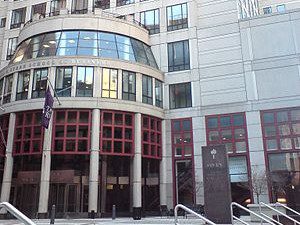
NYU Stern
The drop of nine spots on the list did seem harsh—and pretty implausible. Indeed, this year’s No. 12 showing seems much more legit for the traditionally top-15 school—suggesting it got its scores in on time this year.
Again, Clear Admit’s Graham Richmond weighs in: “Last year’s NYU Stern/U.S. News rankings fiasco did not paint U.S. News in the best of lights. It felt like a petty slap on the wrist aimed at Stern and served to raise questions about the validity of the rankings, which were arguably no longer accurate where a key school was concerned. While it is nice to see things seemingly back to ‘normal’ this year, the issue highlighted the perils of a straight ordinal ranking that some suspect can be tweaked to sell magazines, rather than a tiered ranking that represents the true matriculation behavior we see among applicants seeking an MBA.”
7) Movers and Shakers Elsewhere in the Ranking
Of course, there are many business schools beyond the top 10. U.S. News ranked 131 schools in total. Further down in the rankings you see some more precipitous gains and losses. On the plus side, Arizona State University’s W. P. Carey School of Business and USC’s Marshall School of Business both cracked the top 25. Carey jumped 10 places to 25th, from 35th last year. Marshall moved up seven spots to come in just ahead of Carey at 24th.
The University of Virginia’s Darden School of Business slipped three spots to 14th, it’s second consecutive year of decline. Vanderbilt’s Owen School of Management also took a hit, dropping from 22nd to tie with Carey at 25th. Falling out of the top 25 altogether was Rice University’s Jones Graduate School of Business, which dropped to No. 29. This, despite its 11-spot leap to eighth place in Bloomberg BusinessWeek’s November 2016 ranking.
This article has been edited and republished with permissions from Clear Admit.
Social Impact and the MBA: Business Schools Where the Two Are Synonymous
This article originally appeared in its entirety on clearadmit.com
“Oh, God yes!” replied Stacey Rudnick when asked if interest in social impact is on the rise among the MBA students she counsels. Rudnick leads career services for the McCombs School of Business at the University of Texas at Austin, but her emphatic reply is a standard refrain at any number of leading business schools when asked the same question. Continue reading…
7 Things You Need to Know About the 2017 U.S. News Business School Ranking
This piece originally appeared in its entirety on clearadmit.com
Harvard Business School (HBS) reclaimed the number one spot in this year’s U.S. News & World Report ranking of the nation’s best MBA programs after a two-year stint in second place. Stanford Graduate School of Business (GSB), which has passed the crown back and forth with HBS for more than a decade, took second this year, tying with the University of Chicago Booth School of Business.
In addition to the subtle movements of programs rising or losing a rank, there were quite a few surprises in this year’s list. The Clear Admit team of admissions experts has sifted through the data and compiled a summary of seven key things to note this year: Continue reading…
U.S. News Offers Sneak Peak of Top 10 Business Schools
This post was originally published in its entirety on Clearadmit.com
U.S. News & World Report next week will publish its annual ranking of MBA programs, but to whet people’s appetites it today offered a sneak peek of the schools that secured spots in the top 10. The following schools, listed alphabetically, made the cut: Continue reading…
The Growth of International Indian MBA Students
Increase in Indian MBA Students
It shouldn’t be a surprise to anyone that top MBA programs are being flooded with applications from Indian candidates. According to the Graduate Management Admission Council, the number of Indians taking the GMAT increased by nearly 20 percent from 2010 to 2012, and more than half of those GMAT scores were sent to American business schools. In fact, from 2012 to 2013 a total of 25,268 Indians took the GMAT, third in the world behind the United States (90,541) and China (53,005). Continue reading…
Advice from Clear Admit: Understanding the MBA Admissions Interview, Part II
This post has been republished in its entirety from its original source clearadmit.com. This is the second in Clear Admit’s three-part series on the MBA admissions interview. In case you missed it, view Part I here.
Okay—now that you’re clear on open interviews and interviews by invitation, let’s get into some of the finer points. What’s this about blind versus non-blind interviews, you ask? Some schools believe strongly in the notion of blind interviews, which means that your interviewer will know nothing about you in advance of the interview other than what appears on the resume you give them. Continue reading…
The Financial Times 2022 Global MBA Ranking: Wharton Returns on Top
The Financial Times (FT) released its rankings of the 100 best MBA programs for 2022. While COVID kept several schools on the bench last year, a total of 151 schools participated in the 2022 edition.
“It’s important to remember that COVID took a toll on the rankings last year, but several programs seem to be making a comeback,” says Graham Richmond, Co-founder of Clear Admit. “For instance, six schools in this year’s top 20 were not a part of last year’s ranking due to COVID abstentions. Wharton even storms back to grab the top spot after skipping the 2021 rankings.”
Top Ten Overall
More than half of the rankings are U.S. programs. Here are the top 10 MBA programs of The Financial Times 2022 Global MBA rankings (2021 positions are in parentheses):
| Ranking | School |
|---|---|
| 1 | University of Pennsylvania: Wharton |
| 2 | Columbia Business School |
| 3 (tie) | INSEAD (1) |
| 3 (tie) | Harvard Business School |
| 5 | Northwestern University: Kellogg School of Management (6) |
| 6 | Stanford Graduate School of Business |
| 7 | University of Chicago Booth School of Business (3) |
| 8 | London Business School (2) |
| 9 | Yale School of Management (4 tie) |
| 10 | Iese Business School (4 tie) |
Six of the 2021 top ten MBA programs stayed in the top ten this year, though only Northwestern Kellogg improved their standing amid the return of last year’s COVID absentees. Richmond adds, “The FT’s ranking is always interesting due to the fact that it attempts to combine schools from all regions and features some rather strange shuffling of the deck within the top tier. Even so, if we look at the regions within the rankings, we still see a number of expected outcomes, especially if we think of the general ‘tiers’ or groupings of schools and ignore some of the jockeying within tiers (M7, S7, etc.). For instance, the first 18 U.S. MBA programs listed include all of the usual suspects – tracking the highly respected US News ranking in that market.” He continues, “The same phenomenon can be observed with the European schools in the sense that many would agree that the first 8 European programs featured in the ranking indeed comprise the 8 best offerings in that market – even if some may seek to debate the exact ordering of the group.”
“It may be a surprise that Stanford GSB isn’t in the top five, but because this ranking puts so much stock in alumni earnings, I think it makes sense,” Richmond reflects. “So many Stanford graduates pursue startups and entrepreneurship that they don’t have a big, traditional salary to point to in the first few years out of school, which has significant weight (20) in the FT rankings.”
However, it is no surprise that we see Wharton at the top. In previous years, Wharton has consistently ranked at the top of the FT list, largely due to the high salaries alumni make, which is a key metric for The Financial Times list. Wharton alumni, excluding those working in lower-paid sectors, reported the highest overall average annual income in 2021. Three years out of school, Wharton alumni earned an average $238,000 salary. Comparatively, the average salary for alumni of the 100 schools ranked this year was $161,000.
FT Global MBA Ranking 2022: Top Ten U.S. MBA Programs
The Financial Times MBA ranking looks at business schools worldwide. In the U.S. market, the top 10 schools in 2022 look significantly different from 2021:
- University of Pennsylvania: Wharton
- Columbia Business School
- Harvard Business School
- Northwestern University: Kellogg School of Management
- Stanford Graduate School of Business
- University of Chicago: Booth
- Yale School of Management
- MIT: Sloan School of Management
- New York University: Stern
- University of California at Berkeley: Haas
FT Global MBA Ranking 2022: Top Ten European and Asian MBA Programs
Looking at just programs outside the U.S., the top 10 MBA programs in Europe and Asia are as follows:
- INSEAD
- London Business School
- Iese Business School
- HEC Paris
- SDA Bocconi School of Management
- CEIBS
- National University of Singapore Business School
- University of Cambridge: Judge
- IMD Business School
- University of Oxford: Saïd
Richmond expands on the international rankings, noting, “When it comes to European MBA programs, we see many familiar faces at the top of the pack with INSEAD (3rd), LBS (8th), IESE (10th), HEC (11th), and Bocconi (13th). Interestingly, Cambridge, IMD and Oxford all finished a bit behind the leaders, all losing ground this year – especially Oxford, which fell a full 10 slots from their 2020 ranking and 14 slots from their 2021 result. Another noteworthy mover in the rankings was CEIBS, which has fallen into the #16 slot following top-10 showings in 2020 (#7) and 2021 (#5).”
Ranking Methodology
FT ranks the top 100 MBA programs in the world using 20 different criteria. Eight of these are alumni-based, requiring at least a 20 percent response rate and a minimum of 20 responses total for inclusion, making up 61 percent of the ranking. Because of disruption from the Covid-19 pandemic, Financial Times considered schools with a lower response rate.
See here for more details on the ranking methodology.
Don’t let FT have all the fun! Submit your own MBA rankings in MBA RankingsWire.
///
Originally published on our sister site, Clear Admit.
MBA Program Cost 2020-2021
MBA Cost, Expenses and Total Cost
MBA Program Cost Explained
It is no secret that the cost of an MBA continues to rise every year for the world’s top programs. Even with some schools instituting a ‘tuition freeze’, the cost of attendance for first-year students can exceed over $100,000. In addition to tuition, the total cost of attendance typically includes tuition, fees, health insurance plan, room and board, and living expenses. If cost is a crucial factor in your decision, one bright spot is that classes are online due to COVID-19. This can impact your total cost of attendance by eliminating your room and board and living expenses if you planned to live on or near campus. Lastly, the costs in the chart above are for first-year MBA students. It is important to note, these programs are typically two-years. Therefore, your second-year costs will typically be the same on average, while some schools may increase or decrease costs slightly.
Analysis of 2020-21 Tuition Cost
The average first-year, full time MBA tuition cost for the 25 full time MBA programs was over $66,000 per year, with a range from just $27,864 per year at the Kelley School of Business to $80,432 per year at the Wharton School of Business. In addition, top-ranked MBA programs at private universities located in coastal cities tend to charge higher tuition while MBA programs located at state universities outside of large coastal cities tend to charge lower tuition.
Analysis of Additional Fees
The average additional 2020-21 MBA Fees is over $32,000. However, there is a wide range of fees based on each school. For example, the Tepper School of Business, which is located in Pittsburgh charges $14,905 in additional fees. However, the prestigious Harvard Business School charges $45,378 in fees for first-year MBA students. On average, the bulk of a student’s fees include your room and board, and your living expenses. Another important note is that MBA programs located in larger coastal cities with a higher cost of living tend to charge higher additional fees than schools located in smaller metropolitan areas with a lower cost of living.
Analysis of Total 2020 – 21 MBA Tuition Cost and Fees
The average total 2020-2021 total cost of attendance for our first-year students at our list of MBA programs was over $98,000.. However, the total cost of attendance had a varied range. The lowest total cost of attendance is the Tepper School of Business at $49,905 and the Kelley School of Business at $53,026. Whereas the highest total cost of attendance is the Stern School of Business at $119,251 and the Sloan School of Business at $120,846.
YOU MAY ALSO LIKE: MBA COST GUIDE
The Top 5 MBA Programs in Spain
When it comes to the top business schools in Europe, Spain is home to many of the best. In fact, two of the top MBA programs in the world are located in Spain: IESE Business School and ESADE Business School. So, we thought we’d take a moment to break down the top Spain MBA programs for full-time applicants and why they stand out.
Continue reading…
Chicago Booth, Harvard Top The Economist’s 2019 Full-Time MBA Ranking
The Economist 2019 full-time MBA ranking is finally out, with the University of Chicago Booth School of Business—once again—cracking the top spot. This marks the second consecutive year the school stayed on the top of the list.
Continue reading…




